20 Fun and Interesting Biology Experiments for High School
Jennifer is a prolific writer with over 10 years of experience in online writing. She enjoys creating quotes and poems.
Learn about our Editorial Policy .
Unlike science in middle school, high school biology is a hands-on endeavor. Experiments are a standard part of biology courses, whether they are part of a controlled laboratory class, science fair, or individual student projects. Explore a few fascinating high school biology experiments; and discover ideas for simple and easy biology experiments to incorporate into your curriculum.

Examples of Biology Experiments for High School
Whether you are looking for a science fair project or need to create a project for a class assignment, there are numerous biology projects for teens.
- 7 Senior Bio Examples to Help You Craft Your Own
- 20 Websites for Teenagers to Socialize, Play, and Study
- 70+ High School Journal Topics to Inspire You to Write
Frog Dissection
Dissecting a frog is a quintessential part of high school biology. If possible, try to get both female and male specimens for your class so students can see the eggs and compare the insides to the male frog.
Flower Dissection
High schoolers can get a bit squirmy about frog dissection. Have a flower dissection instead. The teens can find and label the female and male parts of the flower. It can be fun for high schoolers to check out flower intricacies under a microscope.
Diversity Among Plant Samples
Another simple biology experiment involves going into your natural environment, such as a local park, to observe diversity among plant samples. To make the experiment more detailed, students can rub collected samples on filter paper to observe which plants present which colors . Teens can work to find out why certain plants present certain colors.
Phototropism
It can be enlightening to show kids how phototropism affects plants. They can set up an experiment by using different materials to affect light. They can see how affecting the light affects the growth of the plant.
Water From Common Sources
Water is everywhere. Unfortunately, water contains numerous elements too. A great experiment is collecting water samples from various sources and viewing them under a microscope. Students can then compare their results and attempt to postulate why a given water source would present more organisms than another would.
Yeast Experiment
Another experiment involves taking a piece of bread to monitor the molds that grow over a period of two weeks.
Taste Perception
Everyone has their own taste. Literally! Some people like sour things while others like sweet. Find out if everyone perceives taste the same way and has the same threshold for taste by doing an in-class experiment.
Disinfectant Effectiveness
Ever wonder how effective hand sanitizer is at killing bacteria? Test it! Grow bacteria in a Petri dish along with paper soaked in peroxide, white vinegar, rubbing alcohol, etc. Find out how each one of them works to inhibit bacteria growth.
Pea Plant Genetics
Students can recreate Mendel's genetic pea plant experiments . By growing pea plants and comparing their phenotypes, students can determine each parent plant's genotype.
Examining Fingerprints
Fingerprints are pretty amazing features on the human body. Not only can you use them to open your phone, but each one is unique . Put your fingerprint on paper and examine the different aspects of the lines and arches on your fingers. Compare fingerprints among everyone in class.
Comparing Animal and Plant Cells
To better understand animal and plant cells, students can compare cells from their cheeks to cells from an onion. Just stain the cells with iodine or another dye to better see the cell structures under a microscope.
Creating a DNA model is a great way to help students understand the structure and function of DNA in genetics. Students can use candy, string, and toothpicks to develop a fairly realistic model of the double helix structure.
Water Bottle Germs
Many people refill their water bottles in high school. But do they add germs or bacteria to the bottle? Is refilling a disposable water bottle safe? Have students take swabs of the water bottles they use and look for bacteria around the lid or on the bottle.
Testing Hair
Teens use a lot of hair products. But do they truly work? Have teens in your class take a few samples of their hair. See what happens to the hair when common hair products are added.
Water Cycle
Understanding the water cycle isn't hard. But teens can look at it firsthand by creating a water cycle experiment. Just have them fill a baggie with water and tape it to a window. They will watch evaporation, condensation, and precipitation in action.
Closed Ecosystem Bottle
It can be hard for students to imagine something having its own ecosystem. However, you can use a plastic bottle to create a closed ecosystem.
Field Survey Biology Experiment
This experiment is great because it is cheap, easy, and you can do it in a variety of areas around your school or send students home with it. The goal is to observe the surrounding area over time and monitor the samples that you collect.
Materials You'll Need
For this experiment, you need to grab:
- Jar or baggies to collect samples
- Stakes and string or cones help mark an area
- Paper or journals for taking notes
- Slides, slide covers, and a microscope
Observation Instructions
Take note that you will observe your area for several months, so choose an area that is easy to re-mark or where you can leave the markings up, so you return to the same designated area each time.
- Have students choose one spot to observe. The spot should be no more than two to three feet square.
- Do you see evidence of animals? (Look for prints, scat or guano, fur, owl pellets, etc.)
- What plant life do you see? (Look for moss, lichen, weeds, and other plants).
- What fungus do you see? (Look for mushrooms and other fungal growth).
- What insects do you see? (Encourage students to look specifically for relationships here - such as connecting mosquitos with water or bees with flowers or a hive).
Sampling and Classroom Instructions
Bring the research back into the classroom by following these instructions.
- Guide students to make connections and note relationships in their marked area. Have them inventory the area and draw a crude map of where everything is.
- If possible, have students use tweezers and gently take samples of soil, fungus, moss, plant life, insects, etc.
- pH value of soil or water
- Microorganisms in water
- Plant cells under a microscope
- Comparative structure of flowers you find
- Require students to record everything in their own journal or interactive notebook.
Teacher tip: Set up stations in the classroom for viewing, dissecting, drawing, testing pH, etc. This will allow students some choice in how they proceed with examining their specimens.
Testing for Bacteria
Have students see where the most bacteria are lurking. This experiment is great if you want a lab that has guaranteed results. There is always some kind of bacteria lurking somewhere, just waiting to grow in a student's Petri dish.
These are the materials you are going to need to have on hand.
- Prepared Petri dishes, three per student
- Sterile swabs
- Painter's tape
- Scotch tape
- Permanent Marker
- Graph paper
Material notes : You can also purchase sterile Petri dishes and agar separately; however, it is much more likely students will contaminate the plate before they swab.
Preparing Your Petri Dishes
Prepping your Petri dishes is an essential part of the experiment.
- Before opening any materials, have students identify three places (but in one physical location such as at home or at school) that they are going to swab for bacteria. Encourage them to hypothesize about which place they think will grow the most bacteria.
- Using the Petri dish, trace three circles on the graph paper and cut it out.
- In pencil, draw a line to denote the 'top' of the circle. It doesn't matter where you draw the line, but you will need something to show you how your Petri dish is oriented so you can be sure you're tracking the same colony each time you observe.
- On the back of the graph paper circle, note the location where you will take the swab, as well as the date you are taking the swabs. Do this for all three Petri dishes you have.
Collecting Samples
Have students bring their unopened sterile swabs and closed Petri dishes to the site. Carefully, they should:
- Set the Petri dish down on a flat surface.
- Unwrap the swab.
- Swipe the swab across the area they suspect has bacteria.
- Lift the lid, gently wipe the used swab across the agar, and close the lid, carefully but quickly.
Hint: Sometimes, it's helpful to tape the Petri dish shut so that the Petri dish doesn't accidentally lose its lid.
Evaluating Results
Now that you've swabbed the areas, it's all about the results.
- Have students draw Petri-dish-sized circles in their lab books or on separate graph paper. Draw one week's worth of Petri dishes for each dish the student has.
- As the colonies start to grow, have students draw the size in their notebooks, making daily observations. If they cannot observe daily, have them observe on the same day(s) over a month.
- They should also be recording the color and other notable features of their bacteria colonies in their lab books.
- At the end, the students should write a conclusion of their study.
The Effect of Light on Growth
In this lab, students investigate how light affects plant growth. Students may use any plants, but cress will grow more quickly, so your students can get results faster.
Gather up your materials.
- Styrofoam cup or bowl
- Potting soil
Instructions
With your materials at the ready, it's time to start your experiment.
- On Day 1 - plant seeds in the soil in the cups.
- Label the cups according to the light you're going to use. You can compare sunlight vs. complete darkness, or you can compare several types of light.
- On each day after the initial day, take a picture of each cup and try to measure the growth, if any.
- For your lab entries, measure the sprouts, and note color and shape characteristics.
Planaria Regeneration
In this lab, students watch the rate at which planaria regenerates and test whether how you cut the planaria makes a difference as to how they grow back.
To conduct this experiment, you want to grab.
- 9 planarias
- 3 small plastic Petri dishes
- 1 large plastic Petri dish
- 1 plastic pipet
- 1 magnifying glass
- 1 plastic coverslip
- Spring water
- Paper towels
- Ice pack(optional)
Setup Instructions
Getting the setup right is half the battle when it comes to creating fun and interesting biology experiments for high schoolers.
- Start by numbering the three small Petri dishes to ensure nothing gets confused later.
- Using the pipet, move a planarian into the large Petri dish.
- At this point, you may want to try to set the Petri dish on an ice pack for a few minutes. This isn't totally necessary, but it will slow the planarian down to make it easier to cut.
- Right behind the head
- Right in the middle
- Right towards the tail
- Use the pipet to gently transfer each segment to a new Petri dish (with spring water).
- Repeat the steps with all remaining worm segments.
- Every day, observe the planaria. Regeneration will be considered 'complete' when the photoreceptors (the black dots that look like eyes on the planarian's head) appear.
Scientific Method and High School Biology Experiments
Much of high school biology is focused on instilling the elements of science in students. The scientific method is one of these main focuses. The method prompts participants in science to be investigators and to come up with a guess about what will happen in a given experiment, called a hypothesis. The point of the experiment is then to either prove the hypothesis correct through the experiment or prove it incorrect. This prompts teens to get involved in the scientific method while teaching other scientific skills, such as:
- The ability to make a rational estimate based on present factors and knowledge
- Close detail and monitoring skills
- The possibility of being wrong and how to move past that if it turns out to be the case
- Quick thinking skills
As much fun as biology experiments can be, there is an educational component spearheading the experiment.
Fun and Interesting High School Biology Experiments
For teens, high school biology can be fun. Finding the right experiment can help biology pop off the page and become more than just another required course of study. Who knows? Perhaps your student will even be prompted to enter a science fair or a career rooted in science?

10 Awesome Biology Experiments Ideas For High School Aspirants
Science is no fun without practical experiments. Unlike middle school, where you limit your study and inquiry of science to the theoretical realm, high school has a different scene. Experiments are a major part of studying science in high school, and biology all the more so. Biology is fascinating. It makes us wonder at the complex system which makes the human body function efficiently; it has all the answers to the questions of death, sickness, and life. But we must admit that only the theoretical explanation of these complex concepts never suffices to give us a satisfactory understanding. That is where practical experiments come to the rescue.
Therefore, this post will cover 10 fascinating biology experiments that high school students can do independently, even at home.
Cool Experiments To Do In Your Bio Lab
While many are intrigued by art competitions , others are moved toward robotic classes. However, in a bunch of students, there are a few who love biology experiments. Hence, here are a few experiments that can be tried out by high schoolers if biology is the subject that piques their interest:
1. Extract DNA
Everyone knows DNA is the agent behind our hereditary traits. Residing in the cell’s nucleus, it guides major aspects of our physiognomy. Usually, the DNA is not visible to the naked eye, you need a powerful microscope to view it, but with this experiment, you can have a fine look at the DNA with this DNA extracting experiment.
Basically, you will be forcefully breaking down some cell walls of the extracted cells by dipping it into your extraction solution. Adding 35ml of dish soap and 5gm of salt in 240 ml of water will give you the extraction solution. Dip and mix some mashed banana slices into the extract, leading the DNA to head out into the solution. Then we will use some alcohol to force the DNA to join up into large chains that we can actually see. You will get a fluffy white substance, the DNA that is visible to the naked eye, made possible by this extraction experiment.
2. Dissect A Flower
Everyone has theoretically seen and known the different parts of a flower. Some exceptional students might even have that picture inscribed in their memory. Very well if you have that, but the hands-on experience of viewing those parts with your own eyes can definitely beat any other theoretical picture-viewing experience.
So, first thing first, go out and choose a bloom. Observe the flower and point out the petals, stamen, and pistil. Use a razor to remove the stamen and observe the Filament and Anther under magnifying glasses. Wipe out some pollen grains and have a detailed look at it under the microscope while you are at them. Next up, remove the pistil and observe your flower’s ovary, stigma, and style with a magnifying glass. This is the simplest yet a fascinating experiment on the list.
3. Raise A Butterfly
Again, we have the theoretical knowledge of the life cycle of a butterfly. Yet it takes us by surprise and wonder when we see the process through our own eyes. So, get ready to be fascinated by a butterfly’s journey from an ugly worm to a colourful butterfly.
The process is easy. You get a caterpillar, observe it daily, and note the changes. The changes will be as precise as your books have always told you. First off, a butterfly lays an egg and a caterpillar hatches from the egg. The caterpillar eats and grows, shedding its skin several times to accommodate its growing belly. Once the caterpillar reaches the right size, it sheds its skin for the last time, revealing the chrysalis, which quickly hardens. Inside the chrysalis, the caterpillar goes through metamorphosis and changes into a butterfly. At the right time, the butterfly breaks out. It hangs onto the chrysalis for a bit, just until its wings dry out and harden. Then, it flies off in search of nectar.
So, in the end, you will be sitting back and enjoying the release of the butterfly you raised with your own very hands.
4. Frog Dissection
Dissecting a frog is one of those lab activities that fascinate and chill you simultaneously. But before you start with the dissection, make sure you take note of all the outer organs like the skin, legs, head, digits, and urinary outlet (cloaca) of the specimen.
You will need a good scalpel, pins, and a dissection tray to cut the frog. After these things are in place, you are all set to perform the three significant incisions on the specimen. Start by cutting from the jaw to down between the legs, then make two horizontal incisions, one above the neck and the other towards the bottom of its legs. At this point, you will start seeing some organs residing in the abdominal cavity. Repeat the same incision on the frog’s abdomen to open the abdominal cavity. Observe the heart, and identify the major organs like the liver, stomach, intestines, and oviducts.
This experiment will definitely leave you amazed at the complex system of nerves, muscles, and bloods that functions interdependently to sustain a living being. However, this experiment should be done in front of teachers and professors in the lab.
5. Diversity Among Plant Samples
Another simple biology experiment involves going into your natural environment, such as a local park, to observe diversity among plant samples. To make the experiment more detailed, students can rub collected samples on filter paper to observe which plants present which colors.
Teens can work to find out why certain plants present certain colors. They can also dissect the flowers of the plants and paste the dissected parts of the flowers in their observation notebooks to make a note of the differences between the flowers of the different species of plants.
6. Yeast Experiment
Another simple and easy experiment on the list for high schoolers is the yeaThis experiment is easy because it only involves taking out four different food samples on different plates and a long-time observation of the mold that grows on each sample.
Studying mold is an excellent way to learn more about ecology and biology. This experiment compares how fast mold grows on different types of foods kept in many American homes. Some of the foods are generally kept in refrigerators to extend shelf life, while others are commonly stored at room temperature. This experiment shows that certain foods grow mold faster than others, which is one reason why these foods are often kept in the refrigerator.
Going a step further, the students can also do research inspired by this experiment and find answers to questions such as: what makes a mold grow? And how does one prevent their growth?
7. Look at cell division under the microscope
Cheap digital microscopes with high magnification power that can be directly connected to your laptop or smartphone are easily available in the market nowadays. You can make use of such microscopes to observe every little thing you find at home or outdoors.
A great experiment to do at home with a microscope is to look at how cells divide in different organisms. One of the easiest is baker’s yeast. With a magnification of at least 400x, you can start discerning the shapes of individual yeast cells in water. You will notice that some of them have little buds on them, which is the way they grow and divide.
Taking it one step further, you can also take the tip of the onion’s root and observe them to study the different stages of mitosis as well.
8. Ferment your own food
Bacteria and yeast are practically geniuses in the art of fermentation. Humans have been taking their help for the longest time to make food items such as bread and alcohol. And it is quite easy to ferment your own food at home.
In most cases, you need a starter culture of the bacteria or fungi that make the food you will be fermenting. You can get it from someone already doing fermentation at home or buy it online. Many options range from kombucha, kefir, or mead to yogurt, cheese, kimchi, and sauerkraut. Each fermented food has different requirements, so ensure you have everything you need before starting. After you have everything in place, you are ready to experiment with this fermented food and its varied tastes.
9. Examining Fingerprints
The tips of each finger of your hand have a combination of lines and features in distinctive patterns that we call fingerprints. Fingerprints are one of the fascinating features of the human body. We have been told that each of us is unique in our light, and our fingerprints prove it to be so. You can analyze your own uniqueness by analyzing your very own fingerprints in this project. All you need is paper, magnifying glass, and stamp ink.
First, you need to press a finger against the ink pad and then against a piece of paper. Then, use the magnifying glass to examine the fingerprints and look for arches, whorls, and loops. You can record your finding on your paper. And then take a friend’s fingerprints to analyze the differences.
10. Create A Fall Leaf (Or Signs Of Spring) Journal
Biology is all about studying life and learning more about our natural surroundings. A Fall Leaf journal or a Signs of Spring journal will help your students learn about the trees and bushes that are in your area. This experiment is easy, needs minimal effort, and is fun and exciting as well.
Things To Remember
Science experiments are interesting by nature, but this aspect of their nature shouldn’t keep us from maintaining our share of vigilant caution. Science experiments could sometimes wreak havoc if we do not take enough caution while doing these experiments. Therefore, in order to prevent yourself from ruining your own experiments, you have to follow some safety instructions while doing these experiments.
Wear covered shoes and long pants while performing any experiment, and keep your hair up so it can’t fall into your experiment or a flame. Don’t carelessly sniff or taste any chemicals; don’t just experiment with everything you get your hands on. Make sure you have your full attention in the experiments, and handle everything with care, especially sharp objects like knives or objects that could produce a flame. And at the end of your experiment, you should also know how to dispose of the waste properly.
In the end of it, what matters the most is that we genuinely imbibe the lessons that we learn from our experiments. These biology experiments will get you further into the fascinating world of biology. If you want to further your knowledge, you may also visit science labs, perform science experiments in the lab, attend workshops and seminars, and meet people and learn from their experiences.
Keep learning, keep experimenting, and keep enjoying the process of learning.

Sananda Bhattacharya, Chief Editor of TheHighSchooler, is dedicated to enhancing operations and growth. With degrees in Literature and Asian Studies from Presidency University, Kolkata, she leverages her educational and innovative background to shape TheHighSchooler into a pivotal resource hub. Providing valuable insights, practical activities, and guidance on school life, graduation, scholarships, and more, Sananda’s leadership enriches the journey of high school students.
Explore a plethora of invaluable resources and insights tailored for high schoolers at TheHighSchooler, under the guidance of Sananda Bhattacharya’s expertise. You can follow her on Linkedin
Leave a Comment Cancel reply
Save my name, email, and website in this browser for the next time I comment.
- Grades 6-12
- School Leaders
Don't Miss Today's Holiday Giveaway!🎁
80 Best High School Science Experiments and Projects for Every Subject
Fire up the Bunsen burners!

For even more free science ideas and printables, head to our science hub! You’ll find resources in every science subject for middle and high school.
The cool thing about high school is that kids are old enough to tackle some pretty amazing science experiments and projects. Some science experiments for high school are just advanced versions of simpler projects they did when they were younger, with detailed calculations or fewer instructions. Other projects involve fire, chemicals, or other materials they weren’t old enough to use before.
Many of these projects can be used as classroom labs or science fair projects. Feel free to adapt them as needed for students’ individual projects, or use them as full-class activities. However you plan to use the projects, just consider variables that you can change up, like materials or other parameters.
To make it easier to find the right high school science experiment for you, we’ve rated all the projects by difficulty and the materials needed:
Difficulty:
- Easy: Low or no-prep experiments you can do pretty much anytime
- Medium: These take a little more setup or a longer time to complete
- Advanced: Experiments like these take a fairly big commitment of time or effort
- Basic: Simple items you probably already have around the house
- Medium: Items that you might not already have but are easy to get your hands on
- Advanced: These require specialized or more expensive supplies to complete
- Biology and Life Sciences High School Science Fair Projects
- Chemistry High School Science Fair Projects
- Physics High School Science Fair Projects
- Engineering High School Science Fair Projects
Biology and Life Sciences High School Science Fair Projects and Experiments
Explore the living world with these biology science project ideas, learning more about plants, animals, the environment, and much more.
FEATURED TEACHER PICK
Ward’s Science Engage Kit : Cell Cycles
Difficulty: Medium / Materials: Easy (Everything is provided for you!)
In this activity, your students will step into the shoes of an R&D intern at an agricultural biotech company. They’ll dig into a new plant crop virus and brainstorm solutions to tackle it.
Extract DNA from an onion
Difficulty: Medium / Materials: Medium
You don’t need a lot of supplies to perform this experiment, but it’s impressive nonetheless. Turn this into a science fair project by trying it with other fruits and vegetables too.
Make plants move with light
By this age, kids know that many plants move toward sunlight, a process known as phototropism. So high school science fair projects on this topic need to introduce variables into the process, like covering seedling parts with different materials to see the effects.
Test the 5-second rule
We’d all like to know the answer to this one: Is it really safe to eat food you’ve dropped on the floor? Design and conduct an experiment to find out (although we think we might already know the answer).
Find out if color affects taste
Just how interlinked are all our senses? Does the sight of food affect how it tastes? Find out with a fun food science fair project like this one.

See the effects of antibiotics on bacteria
Difficulty: Medium / Materials: Advanced
Bacteria can be divided into two groups: gram-positive and gram-negative. In this experiment, students first determine the two groups, then try the effects of various antibiotics on them.
Buy it: Get a gram stain kit , bacillus cereus and rhodospirillum rubrum cultures, and antibiotic discs from Home Science Tools.
Learn more: Antibiotics Project

Witness the carbon cycle in action
Experiment with the effects of light on the carbon cycle. Make this science fair project even more interesting by adding some small aquatic animals like snails or fish into the mix.
Learn more: Carbon Cycle Lab
Look for cell mitosis in an onion
Cell mitosis (division) is actually easy to see in action when you look at onion root tips under a microscope. Students will be amazed to see science theory become science reality right before their eyes. Adapt this lab into a high school science fair project by applying the process to other organisms too.

Test the effects of disinfectants
Grow bacteria in a petri dish along with paper disks soaked in various antiseptics and disinfectants. You’ll be able to see which ones effectively inhibit bacteria growth.
Learn more: Effectiveness of Antiseptics and Disinfectants
Re-create Mendel’s pea plant experiment
Gregor Mendel’s pea plant experiments were some of the first to explore inherited traits and genetics. Try your own cross-pollination experiments with fast-growing plants like peas or beans.
Pit hydroponics against soil
Growing vegetables without soil (hydroponics) is a popular trend that allows people to garden just about anywhere.

Research soil erosion
Difficulty: Medium / Materials: Basic
Learn about the factors that contribute to soil erosion, and create a demonstration of how soil erosion does and doesn’t occur. Make this more advanced by increasing the number of variables that students investigate and discuss.
Learn more: Soil Erosion Experiment

Difficulty: Easy / Materials: Medium
Growing mold is something that students may have done already, but increase the rigor of this experiment by adding in control variables and turning the experiment on its head to study what might prevent mold growth. Once students know where mold spores are, what should we do about it? How can we prevent mold growth?
Learn more: Growing Mold Experiment
More Life Sciences and Biology Science Fair Projects and Experiments for High School
Use these questions and ideas to design your own experiment:
- What are the most accurate methods of predicting various weather patterns?
- Try out various fertilization methods to find the best and safest way to increase crop yield.
- Does exposure to smoke or other air pollutants affect plant growth?
- Compare the chemical and/or bacterial content of various water sources (bottled, tap, spring, well water, etc.).
- Explore ways to clean up after an oil spill on land or water.
- Conduct a wildlife field survey in a given area and compare it to results from previous surveys.
- Find a new use for plastic bottles or bags to keep them out of landfills.
- Devise a way to desalinate seawater and make it safe to drink.
Chemistry High School Science Fair Projects and Experiments
Bunsen burners, beakers and test tubes, and the possibility of (controlled) explosions? No wonder chemistry experiments are such popular high school science fair projects!

Break apart covalent bonds
Break the covalent bond of H 2 O into H and O with this simple experiment. You only need simple supplies for this one. Turn it into a science fair project by changing up the variables—does the temperature of the water matter? What happens if you try this with other liquids?
Learn more: Covalent Bonds
Measure the calories in various foods
Are the calorie counts on your favorite snacks accurate? Build your own calorimeter and find out! This kit from Home Science Tools has all the supplies you’ll need.

Detect latent fingerprints
Forensic science is engrossing and can lead to important career opportunities too. Explore the chemistry needed to detect latent (invisible) fingerprints, just like they do for crime scenes!
Learn more: Fingerprint Science Fair Project
Use Alka-Seltzer to explore reaction rate
Difficulty: Easy / Materials: Basic
Tweak this basic concept to create a variety of high school chemistry science fair projects. Change the temperature, surface area, pressure, and more to see how reaction rates change.
Determine whether sports drinks provide more electrolytes than OJ
Are those pricey sports drinks really worth it? Try this experiment to find out. You’ll need some special equipment for this one.
Buy it: Electrolyte Test Kit at Home Science Tools
Turn flames into a rainbow
You’ll need to get your hands on a few different chemicals for this experiment, but the wow factor will make it worth the effort! Make it a science project by seeing if different materials, air temperature, or other factors change the results.

Discover the size of a mole
The mole is a key concept in chemistry, so it’s important to ensure students really understand it. This experiment uses simple materials like salt and chalk to make an abstract concept more concrete. Make it a project by applying the same procedure to a variety of substances, or determining whether outside variables have an effect on the results.
Learn more: Chemistry Lab: How Big Is a Mole?

Cook up candy to learn molecule calculations
Students make rock candy while learning about chemical reactions and calculations. If they change any of the reactions or amounts, what happens?
Learn more: Rock Candy Experiment

Make soap to understand saponification
Take a closer look at an everyday item: soap! Use oils and other ingredients to make your own soap, learning about esters and saponification. Tinker with the formula to find one that fits a particular set of parameters.
Learn more: Soap Making
Uncover the secrets of evaporation
Explore the factors that affect evaporation, then come up with ways to slow them down or speed them up for a simple science fair project.
Learn more: Evaporation at Science Project
Dancing popcorn
Another way to show a chemical reaction is the dancing popcorn experiment. This video shows two ways to conduct the reaction. Students can explain the science behind each.
Learn more: Dancing Popcorn Experiment
Egg & Vinegar Experiment
Show how vinegar can take the shell off an egg with this experiment. Students can show this experiment in various stages, and talk about what’s happening at the molecular level.
Learn more: Egg and Vinegar Experiment
Make a lava lamp
Show a chemical reaction with a lava lamp. This is a great experiment to do at science fairs that have a lot of younger siblings who will be excited to see the experiment come to life.

Cabbage pH experiment
Explain pH using cabbage water and some other household items. Students can set up a pH demonstration and be ready to explain how pH works.
Learn more: Cabbage pH Experiment
Buy it: pH Test Strips at Amazon

Split water
Show how water splits into hydrogen and water in this easy experiment. Make it more complicated by adding pH or adding snap circuits to focus on electricity.
Learn more: Electrolysis of Water Lab

More Chemistry Science Fair Projects and Experiments for High School
These questions and ideas can spark ideas for a unique experiment:
- Compare the properties of sugar and artificial sweeteners.
- Explore the impact of temperature, concentration, and seeding on crystal growth.
- Test various antacids on the market to find the most effective product.
- What is the optimum temperature for yeast production when baking bread from scratch?
- Compare the vitamin C content of various fruits and vegetables.
- How does temperature affect enzyme-catalyzed reactions?
- Investigate the effects of pH on an acid-base chemical reaction.
- What’s the best way to slow down metal oxidation (form of rust)?
- How do changes in ingredients and method affect the results of a baking recipe?
Physics High School Science Fair Projects and Experiments
When you think of physics science projects for high school, the first thing that comes to mind is probably the classic build-a-bridge. But there are plenty of other ways for teens to get hands-on with physics concepts. Here are some high school science experiments to try.
Remove the air in a DIY vacuum chamber
You can use a vacuum chamber to do lots of cool high school science fair projects, but a ready-made one can be expensive. Try this project to make your own with basic supplies.
Put together a mini Tesla coil
Looking for a simple but showy high school science fair project? Build your own mini Tesla coil and wow the crowd!
Boil water in a paper cup
Logic tells us we shouldn’t set a paper cup over a heat source, right? Yet it’s actually possible to boil water in a paper cup without burning the cup up! Learn about heat transfer and thermal conductivity with this experiment. Go deeper by trying other liquids like honey to see what happens.
Build a better light bulb
Emulate Thomas Edison and build your own simple light bulb. You can turn this into a science fair project by experimenting with different types of materials for filaments.
Measure the speed of light—with your microwave
Grab an egg and head to your microwave for this surprisingly simple experiment. By measuring the distance between cooked portions of egg whites, you’ll be able to calculate the wavelength of the microwaves in your oven and, in turn, the speed of light.

Generate a Lichtenberg figure
See electricity in action when you generate and capture a Lichtenberg figure with polyethylene sheets, wood, or even acrylic and toner. Change the electrical intensity and materials to see what types of patterns you can create.
Learn more: Make a Lichtenberg Figure
Explore the power of friction with sticky-note pads
Ever try to pull a piece of paper out of the middle of a big stack? It’s harder than you’d think! That’s due to the power of friction. In this experiment, students interleave the sheets of two sticky-note pads, then measure how much weight it takes to pull them apart. The results are astonishing!
Build a cloud chamber to prove background radiation
Ready to dip your toe into particle physics? Learn about background radiation and build a cloud chamber to prove the existence of muons.

Measure the effect of temperature on resistance
This is a popular and classic science fair experiment in physics. You’ll need a few specialized supplies, but they’re pretty easy to find.
Learn more: Effect of Temperature on Resistance
Launch a bottle rocket
A basic bottle rocket is pretty easy to build, but it opens the door to lots of different science fair projects. Design a powerful launcher, alter the rocket so it flies higher or farther, or use only recycled materials for your flyer.
Make a solar oven
Model how solar heating works with a solar oven. Students can make this experiment high-school-worthy by testing different types of oven designs, measuring the temperature inside, or determining how much more efficient the solar oven is than a microwave or conventional oven.
Learn more: Solar Oven Science Project

Soundproof a box
Students experiment with acoustics and soundproofing to create a space that’s soundproofed. This would be a major challenge for a high schooler who has to block out the sounds at a busy science fair.
Learn more: Soundproofing STEM Activity
More Physics Science Fair Projects and Experiments for High School
Design your own experiment in response to these questions and prompts.
- What’s the best way to eliminate friction between two objects?
- Explore the best methods of insulating an object against heat loss.
- What effect does temperature have on batteries when stored for long periods of time?
- Test the effects of magnets or electromagnetic fields on plants or other living organisms.
- Determine the best angle and speed of a bat swing in baseball.
- Explore methods for reducing air resistance in automotive design.
- Use the concepts of torque and rotation to perfect a golf swing.
- Compare the strength and durability of various building materials.
Engineering High School Science Fair Projects and Experiments
Many schools are changing up their science fairs to STEM fairs to encourage students with an interest in engineering to participate. Many great engineering science experiments for high school start with a STEM challenge, like those shown here. Use these ideas to spark a full-blown project to build something new and amazing!

Construct a model maglev train
Maglev trains may just be the future of mass transportation. Students can build a model at home and explore ways to implement the technology on a wider basis.
Learn more: Maglev Model Train
Design a more efficient wind turbine
Wind energy is renewable, making it a good solution for the fossil fuel problem. For a smart science fair project, experiment to find the most efficient wind turbine design for a given situation.

Re-create Da Vinci’s flying machine
Da Vinci sketched several models of “flying machines” and hoped to soar through the sky. Do some research into his models and try to reconstruct one of your own.
Learn more: Leonardo Da Vinci’s Flying Machine
Design a heart-rate monitor
Smartwatches are ubiquitous these days, so pretty much anyone can wear a heart-rate monitor on their wrist. But do they work any better than one you can build yourself? Get the specialized items you need, like the Arduino LilyPad Board , on Amazon.
Create cars and race them using balloons or this baking soda experiment. Add more complexity by having students create their cars using 3D printer technology.
Learn more: Baking Soda and Vinegar Balloon Experiment

Grow veggies in a hydroponic garden
Hydroponics is the gardening wave of the future, making it easy to grow plants anywhere with minimal soil required. For a science fair STEM engineering challenge, design and construct your own hydroponic garden capable of growing vegetables to feed a family. This model is just one possible option.
Learn more: Vertical Hydroponic Farm
Grab items with a mechanical claw
Delve into robotics with this engineering project. This kit includes all the materials you need, with complete video instructions. Once you’ve built the basic structure, tinker around with the design to improve its strength, accuracy, or other traits.

Construct a crystal radio
Return to the good old days and build a radio from scratch. This makes a cool science fair project if you experiment with different types of materials for the antenna.
Learn more: Crystal Radio
Buy it: Crystal Radio Kit at Home Science Tools

Build a paper bridge
Bridge building is a fun STEM activity that can be made more or less challenging depending on the ultimate goal. The more functional the bridge has to be, the more difficult the project.
Learn more: Paper Bridge Project

Potato battery
Make, test, and showcase a potato battery. The process is simple enough, so students can figure out just how much power their potato has and what they can do with their battery.
Learn more: Potato Battery

Marble roller coaster
Another fun project that high schoolers can revisit now that they know more about physics and engineering is the roller coaster. Students make a roller coaster for a small car or marble.
Learn more: Paper Roller Coaster
Check out even more ready-to-go science kits for hands-on learning your students will love
Ward’s Science Engage Kits are an amazing way to bring more inquiry-based activities into your classroom. The kits come with everything you need to complete hands-on labs with your class. Your students will develop their critical questioning, research, and teamwork skills while working to solve problems that feel real and important.
Looking for more science content? Check out the Best Science Websites for Middle and High School .
Plus, get all the latest teaching tips and tricks when you sign up for our newsletters , you might also like.

The Big List of Science Fair Project Ideas, Resources, and More
Options for every age, interest, and skill level! Continue Reading
Copyright © 2024. All rights reserved. 5335 Gate Parkway, Jacksonville, FL 32256

7 Fun Biology Experiments for High School
What better way to learn about life’s mysteries than through exciting and fun biology experiments? High school is the perfect time to delve deeper into the world of biology, and I’ve gathered seven fun and educational experiments that will ignite your students’ curiosity and make biology come alive. So, roll up your sleeves, put on your lab coat, and let’s dive into these fun biology experiments!
1. Barf Bag Lab
Topics: cellular respiration, alcoholic fermentation, cellular energy
Photosynthesis and cellular respiration are difficult concepts for students to grasp because they involve molecular interactions that can’t be seen. Bringing these reactions into an observable format is essential for students to comprehend them. Barf bags do just that.
Not only does the name “Barf Bag Lab” catch their attention, but the reaction itself is just gross enough to be quite memorable. Using yeast to demonstrate alcoholic fermentation, students crush sugary cereal to provide a source of glucose. As the bag expands, it may ultimately “barf” its contents onto the lab table. This lab is a great use of scientific processes because variables can be manipulated by changing the type of cereal used. Grab a free Barf Bag Lab Activity from my online store or see more cellular respiration lab experiments in this post .

2. Osmosis Egg Experiment
Topics: semipermeable cell membranes, osmosis, hypertonic, hypotonic, homeostasis
This classic lab provides another opportunity for students to observe the effects of cellular processes that would otherwise be difficult to see. Unlike the previous lab, however, this one involves a little bit of teacher prep work.
By soaking eggs in vinegar for a few days, the shells become soft and can be washed away with a little water. What remains is a semipermeable cell membrane that is easily observed. By deshelling a few eggs, the cell’s response to a variety of solute concentrations can be illustrated. If you’re interested in incorporating this classic experiment into your course, this egg osmosis lab has been vetted by hundreds of high school Biology teachers.

3. Cell Size Diffusion Lab
Topics: cell size, diffusion, cell membrane, surface area to volume ratio
This is a lab that I use as the first of lesson plan in my cell cycle unit , but it also makes a great diffusion lab. I prefer to do this experiment as a demonstration because it involves bleach and knives, which can be a safety hazard in a high school Biology classroom.
By cutting cubes of fresh beets into different sizes, students can practice calculating surface area and volume, which is a skill that helps them understand the necessity of a cell membrane for the diffusion of substances. Each beet cube is then soaked in bleach and students can observe the percentage of the cube’s volume that is reached by the bleach. The visual component of this lab is a great way for students to comprehend the need for efficient nutrient absorption and the reason for cell division.

4. Extracting DNA from Strawberries
Topics: cell structure, DNA, nucleus, cell membrane, histones
This is another classic lab, but one that just can’t be skipped! With a few household ingredients, students can extract long strings of DNA from the nuclei of strawberry cells and scoop it up with a toothpick or skewer. If you want, the DNA can even be preserved in alcohol as a biology souvenir!
At the beginning of my teaching career, I used the split pea extraction lab from Learn Genetics . It’s still a solid lab, but I’ve come to prefer using strawberries over other DNA sources for two reasons: 1) Strawberries are triploid, so the amount of DNA extracted from them is greater and 2) They are easy to smush. Split pea extraction requires a blender to break the cell walls. Since blenders aren’t readily available for every student, it necessitates a demonstration rather than a lab. Some teachers have found success with wheat germ as a DNA source, as well. You can watch a video demonstration of strawberry DNA extraction on my YouTube channel.
5. Natural Selection Lab
Topics: natural selection, mutation, genetic variation, fitness, antibiotic resistance
It’s tough to find labs for natural selection and evolution because these processes usually have to be simulated rather than observed. One of the most popular natural selection labs is the bird beak activity . Students use a variety of materials to simulate finch beaks and learn how beak adaptations cause different species to show niche separation.
Another one of my favorite evolution simulations is a natural selection lab using various household items to simulate antibiotics and bacteria. Antibiotic resistance is a great topic to incorporate into an evolution unit because it is highly relevant to students. Using a variety of pasta shapes to simulate different bacterial species, students use tools like toothpicks and clothespins to act as antibiotics “killing” the bacterial cells. Mutant bacterial cells aren’t able to be picked up by the tools, allowing these new species to flourish as antibiotic-resistant strains. Looking for more evolution labs? Check out my plant cladogram freebie in this post.

6. Candy Radiometric Dating Lab
Topics: fossils, carbon dating, radiometric dating, isotopes, half-life
Using candy is a go-to in my high school courses because it keeps students interested! There are other supplies that can be used for this radiometric dating lab activity, but candy is always well-received in my classes.
Students begin with a designated number of candies with letters on one side (like Skittles, M&Ms, etc) and they shake the candies in a box or bag to simulate radioactive decay. Candies that have flipped represent the daughter atoms. By repeating the shaking and counting of flipped candies, students can create a graph showing the radioactive decay of an isotope. This easily leads to a discussion of half-lives and the radiometric dating of fossils.
7. Greenhouse Effect Experiment
Topics: greenhouse gases, climate change, fossil fuels, carbon dioxide emissions
The greenhouse effect is easy enough to illustrate. Here’s a quick greenhouse effect simulation , if students aren’t familiar. They have likely also observed the greenhouse effect in their own car or a local greenhouse. The effects of carbon dioxide emissions on the greenhouse effect, however, is not something students readily observe. That’s why this simple lab is so clever. Students set up two plastic zipper bags with a cup of water and a thermometer in each bag. Antacid tablets are added to one cup, producing carbon dioxide within that bag. Students then monitor the difference in temperature over a 30-minute period to see how carbon dioxide intensifies the greenhouse effect. For full instructions on this lab including background reading, student instructions, data tables, and comprehension questions, grab this Greenhouse Effect Experiment .

These fun biology experiments will help your students grasp fundamental concepts and nurture their scientific curiosity. Pick one you haven’t tried, gather your lab equipment, and get going!

You might also like...
Creating study guides from cornell notes.

How to Plan Your Biology EOC Review

Plant Experiments for Biology Class

Hey there! I'm Anne.
Search the site.
- Anatomy and Physiology
- Environmental Science
- Homeschool Science
- Teaching Tips
Get Instant Access to Exclusive Freebies!

Grab Exclusive Freebies!
Get great teaching tips and free lessons delivered right to your inbox, monday & tuesday only, 25% discount, use code cyber23 at checkout.

30 Best Science Experiments & Projects for High School
Welcome to our round-up of top science fair projects and science experiments tailored specifically for curious high school students.
Science fair is not just about the glitz and glamour of a first-place trophy; it’s about the passion, the inquiry, and the insatiable curiosity that drive every scientist, young and old. Hopefully, our curated list of the best hands-on science fair projects for high school students will ignite that curiosity in you.
Each project on this list offers a unique opportunity to dive deep into scientific inquiry and present findings with both clarity and flair.
Let’s dive in and make learning an unforgettable adventure!
1. Burn Calories
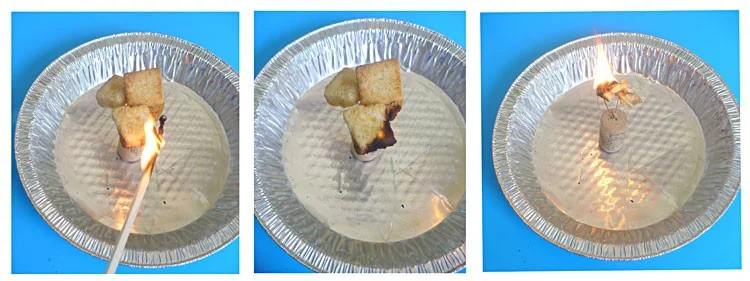
Don’t miss this opportunity to unravel the mysteries of energy transformation and uncover the scientific secrets hidden in the simplest of substances!
Learn more: Science Buddies
2. Extracting DNA from Strawberry
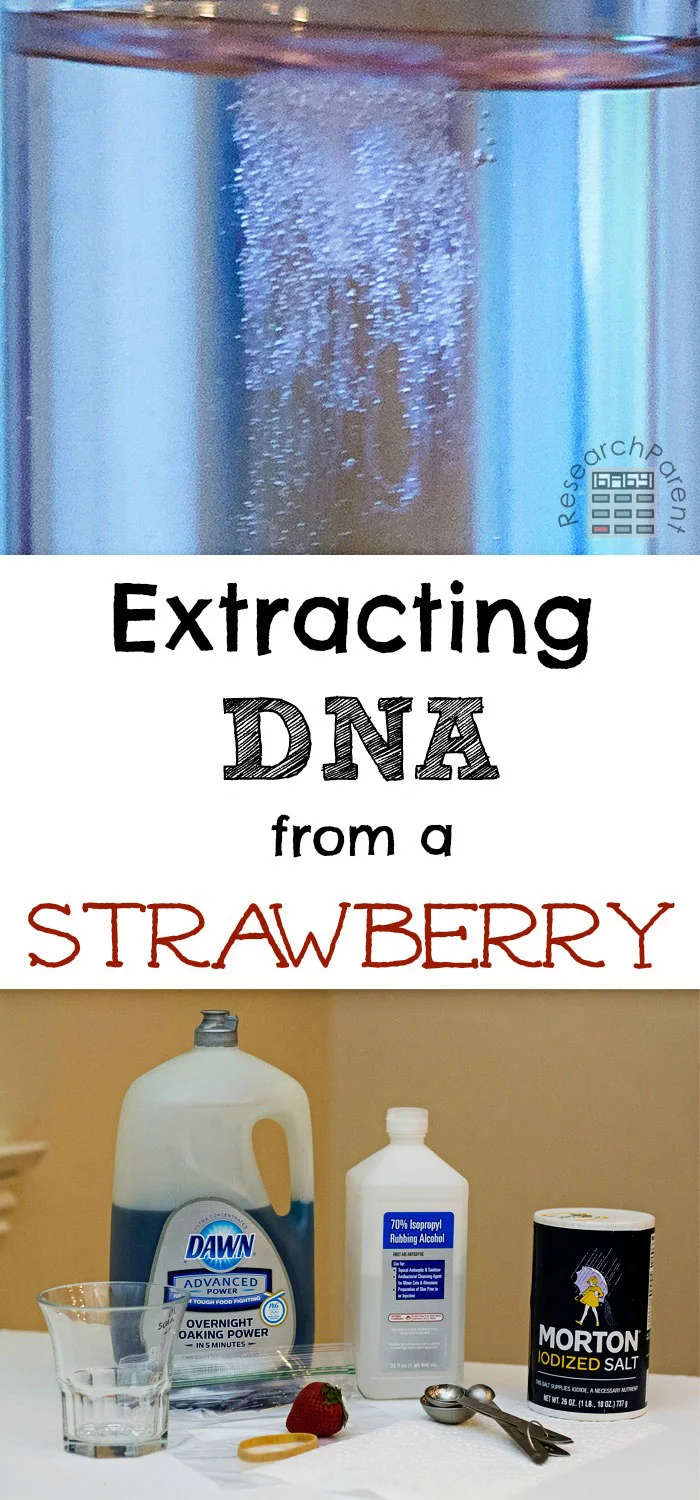
By following a series of simple yet insightful steps, students will witness the magical moment of DNA extraction, fostering a deeper appreciation for the fundamental building blocks of life.
Learn more: Extracting DNA from Strawberry
3. Build a Simple DIY Newton’s Cradle
As students assemble the materials and witness the rhythmic dance of swinging spheres, they will witness the scientific principles they’ve learned in the classroom come to life before their eyes.
4. Make a Monster Dry Ice Bubbles
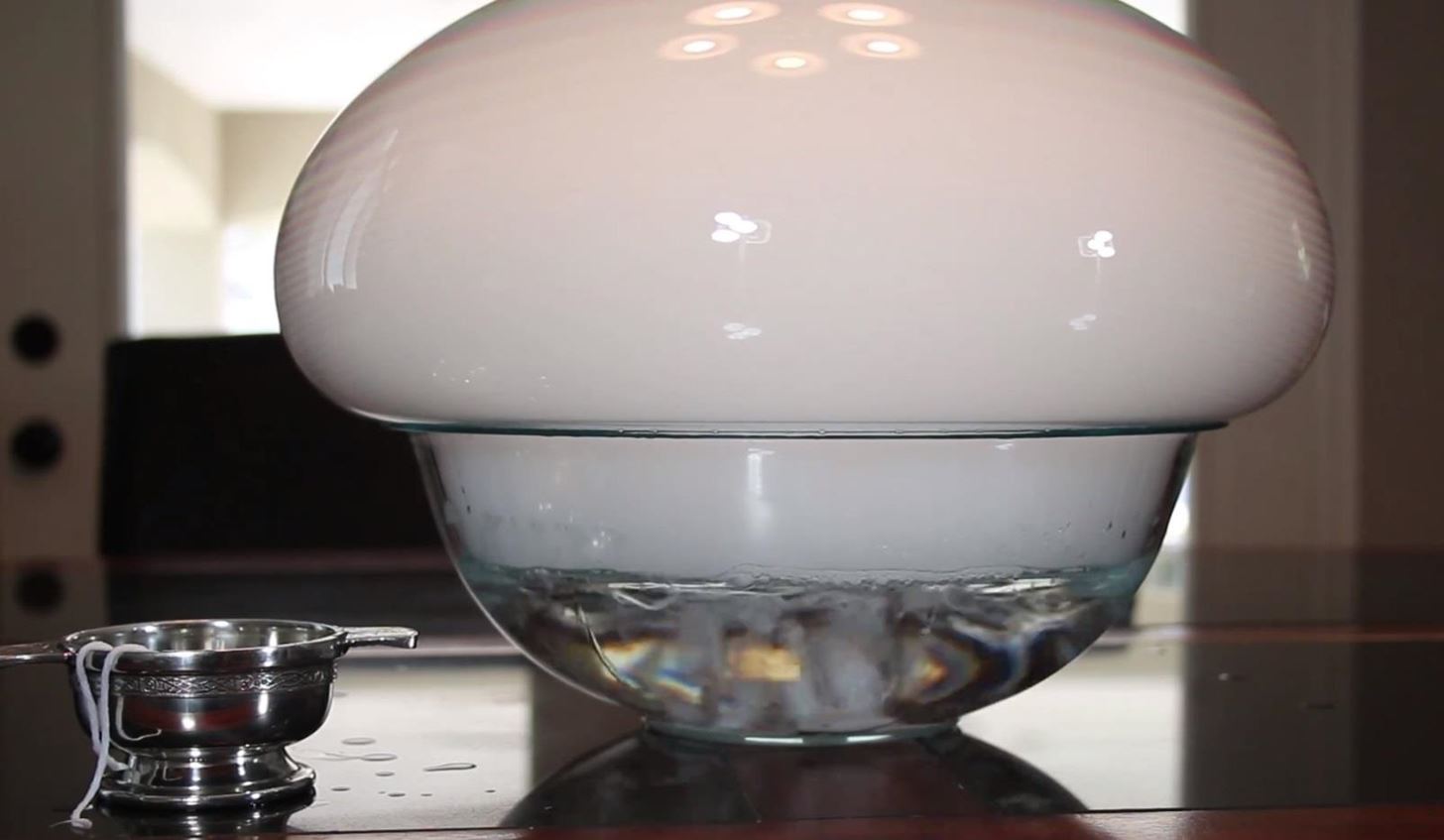
Unleash your inner mad scientist and learn how to make Monster Dry Ice Bubbles with this high school science experiment!
Get ready to be captivated as you create giant, spooky bubbles that dance and swirl with the mysterious power of dry ice.
Learn more: Wonder How To
5. Soil Erosion Experiment
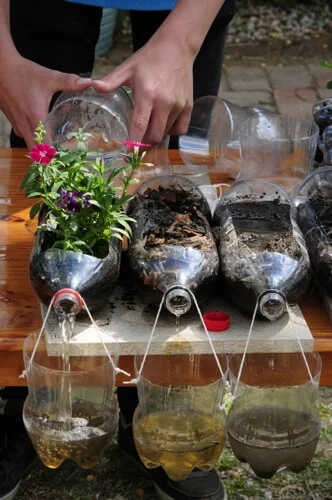
As stewards of our environment, it’s crucial to comprehend the impact of natural processes like soil erosion.
Through this experiment, students will gain a deeper appreciation for the significance of soil conservation and sustainable land management practices.
Learn more: Life is a Garden
6. Candle Carousel
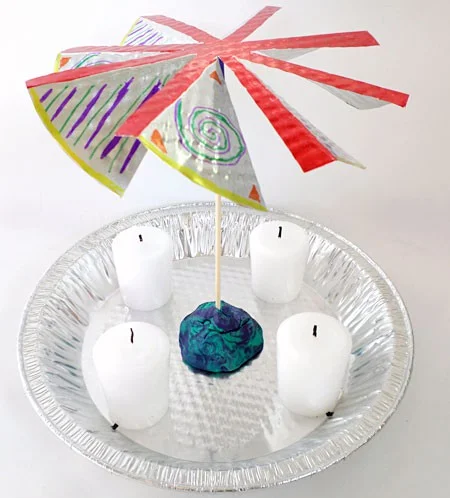
This experiment combines the wonders of physics with the art of crafting, making it an enriching experience that ignites curiosity and fosters a deeper appreciation for the elegant dance of energy in our world.
7. Find Out if Water Conducts Electricity
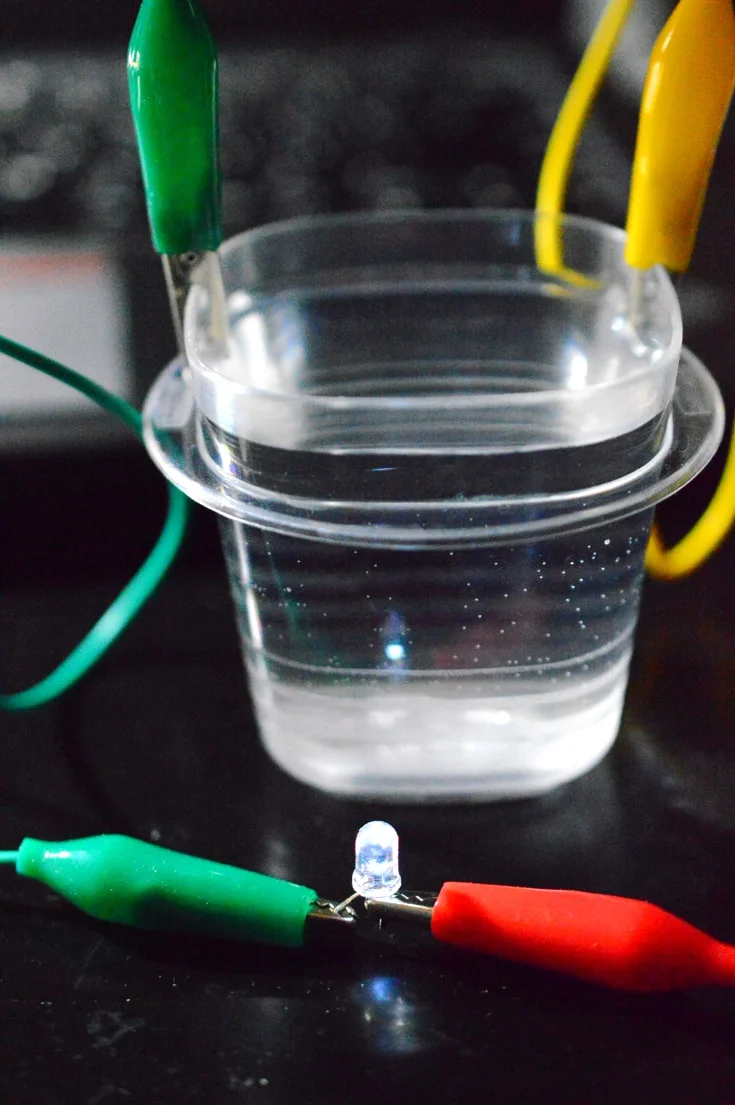
In this captivating activity, students will explore the conductive properties of water and unlock the secrets of how electrical currents flow through different substances.
Learn more: Rookie Parenting
8. Roller Coaster Stem Experiment
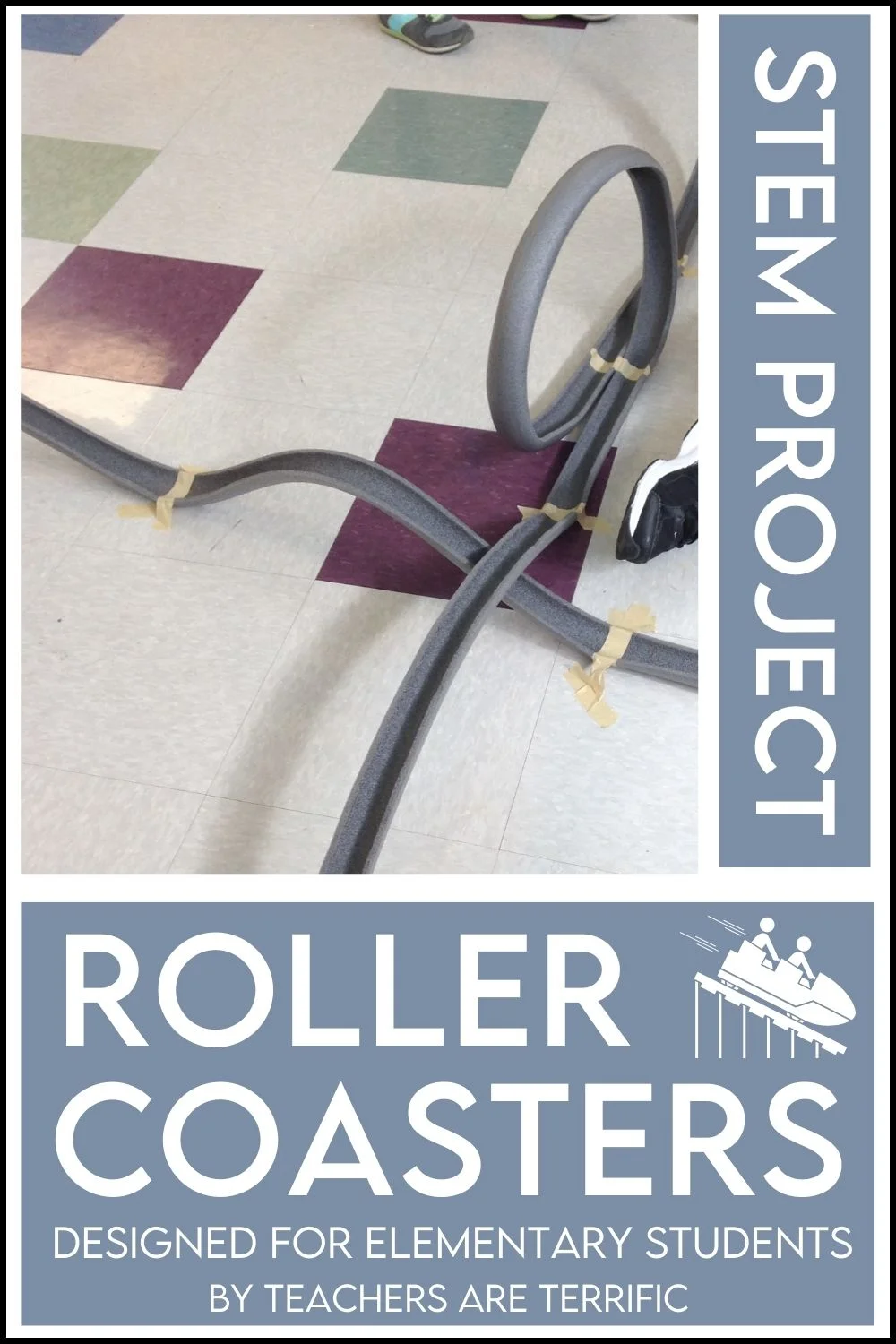
By experimenting with various designs and track configurations, students will refine their problem-solving skills and gain valuable insights into the practical applications of physics and engineering.
Learn more: STEM Project
9. Lemon Battery
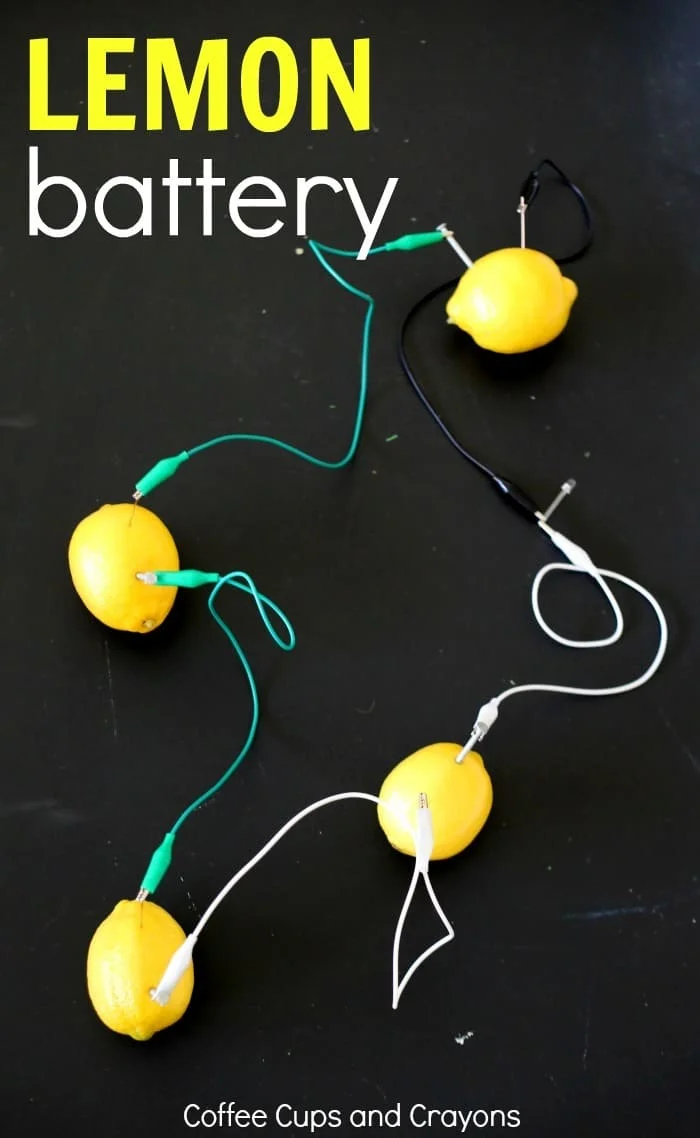
Engaging in this experiment not only teaches the basics of electrical circuits but also sparks curiosity about the natural world and the science behind it.
Learn more: Coffee Cups and Crayons
10. Watering Plants Using Different Liquids
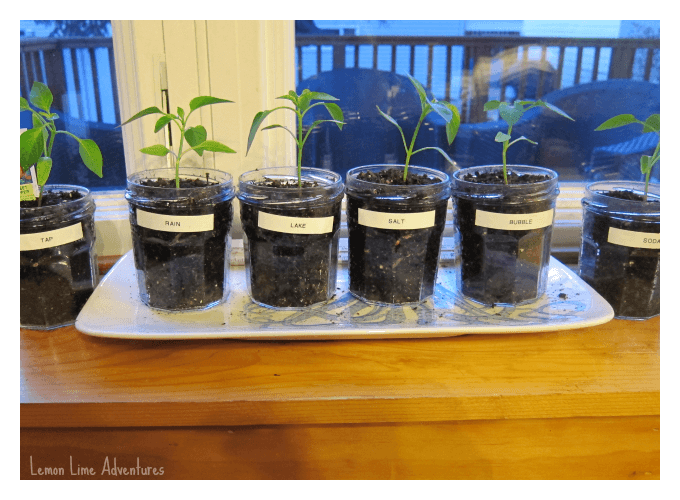
Discover the wonders of plant hydration with the intriguing high school science experiment – “Watering Plants Using Different Liquids.” In this captivating project, students explore how various liquids impact plant growth and health.
Learn more: Lemon Lime Adventures
11. Measure Electrolytes Found in Sports Drinks
By conducting a series of tests and analyses, students will quantify the electrolyte content present in various sports drinks.
12. Relight the Flame Without Directly Touching It
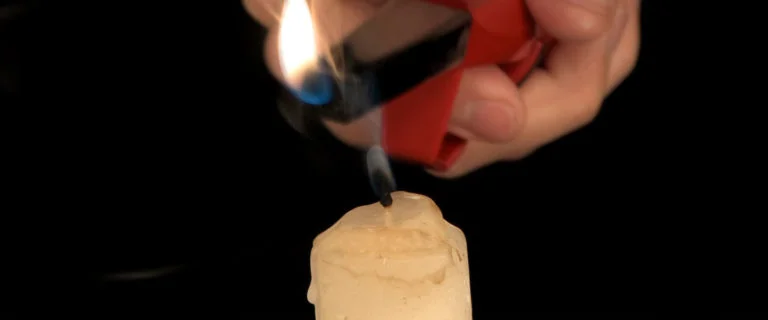
This captivating project challenges students to learn about the intriguing properties of heat transfer and combustion.
By exploring different methods to reignite a candle flame without physical contact, students will uncover the secrets of heat conduction, convection, and radiation.
Learn more: Stevespangler
13. Conduct Fingerprint Analysis
This captivating project immerses students in the intriguing world of crime scene investigations, where they will uncover the uniqueness of fingerprints and their role in forensic science.
14. Separate Water Into Hydrogen And Oxygen Using Electrolysis
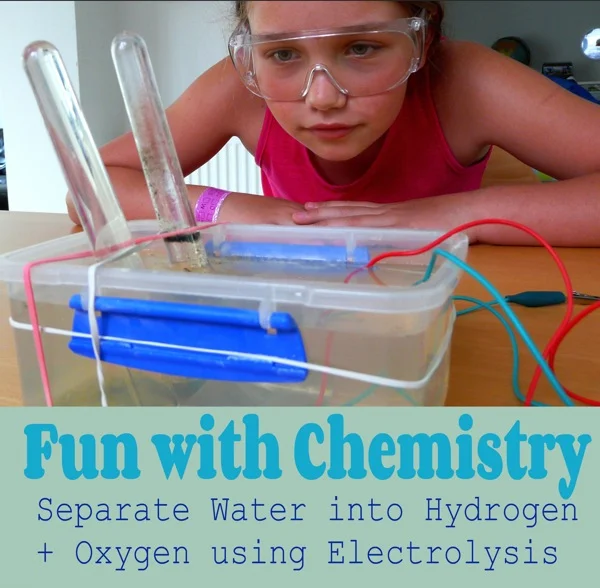
This electrifying project allows students to explore electrolysis and the decomposition of water into its elemental components.
Learn more: Navigating by Joy
15. Simple Color Detection Circuit
This experiment not only introduces fundamental concepts in electronics and circuitry but also opens up endless possibilities for real-life applications, from automated sorting systems to color-sensitive devices.
16. Carbon Sugar Snake
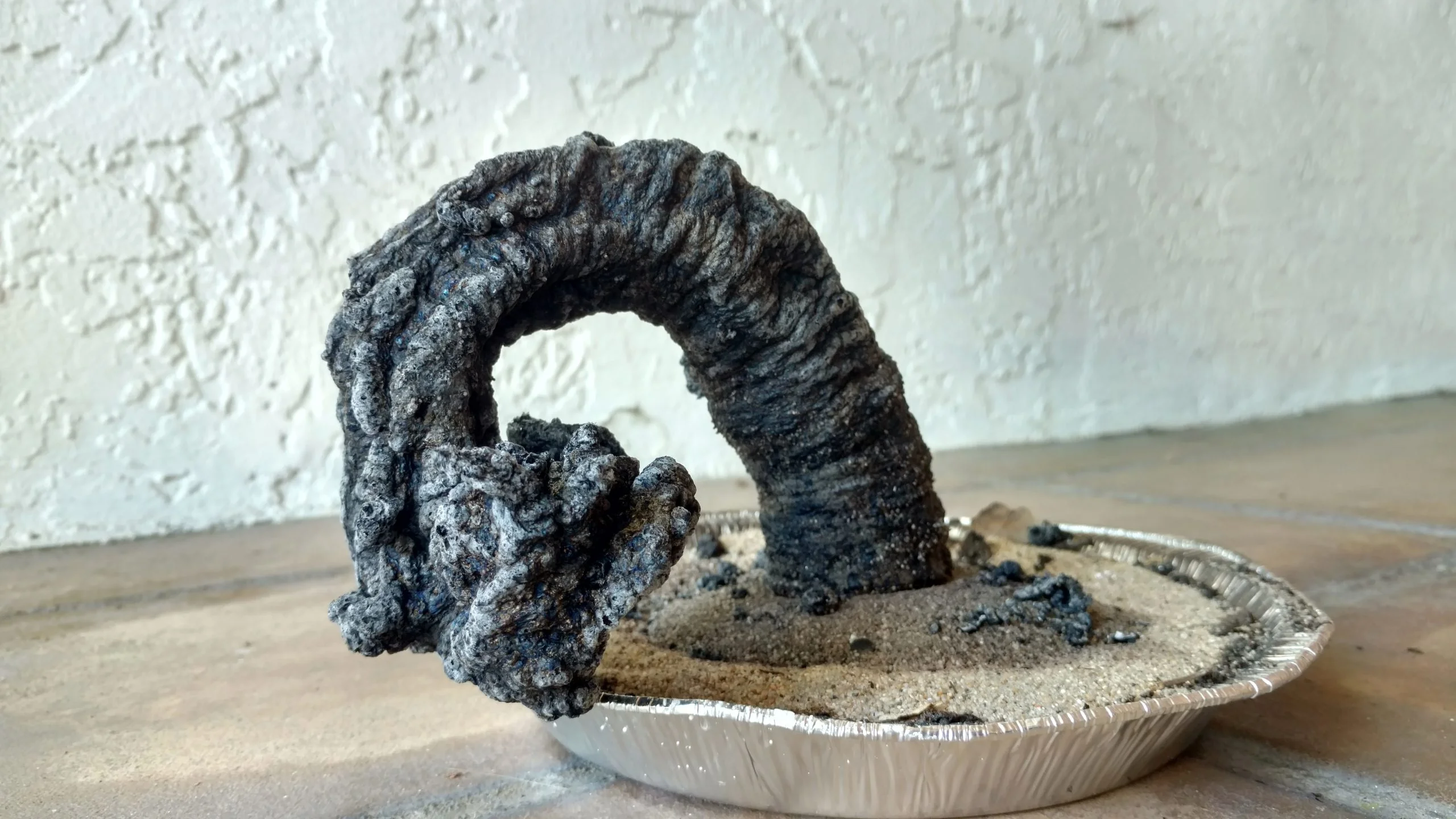
This enchanting project allows students to witness a dazzling display of science as they combine common household ingredients to create a dark, coiling “snake” made of carbon.
Learn more: Kiwi Co
17. Build a Hydraulic Elevator
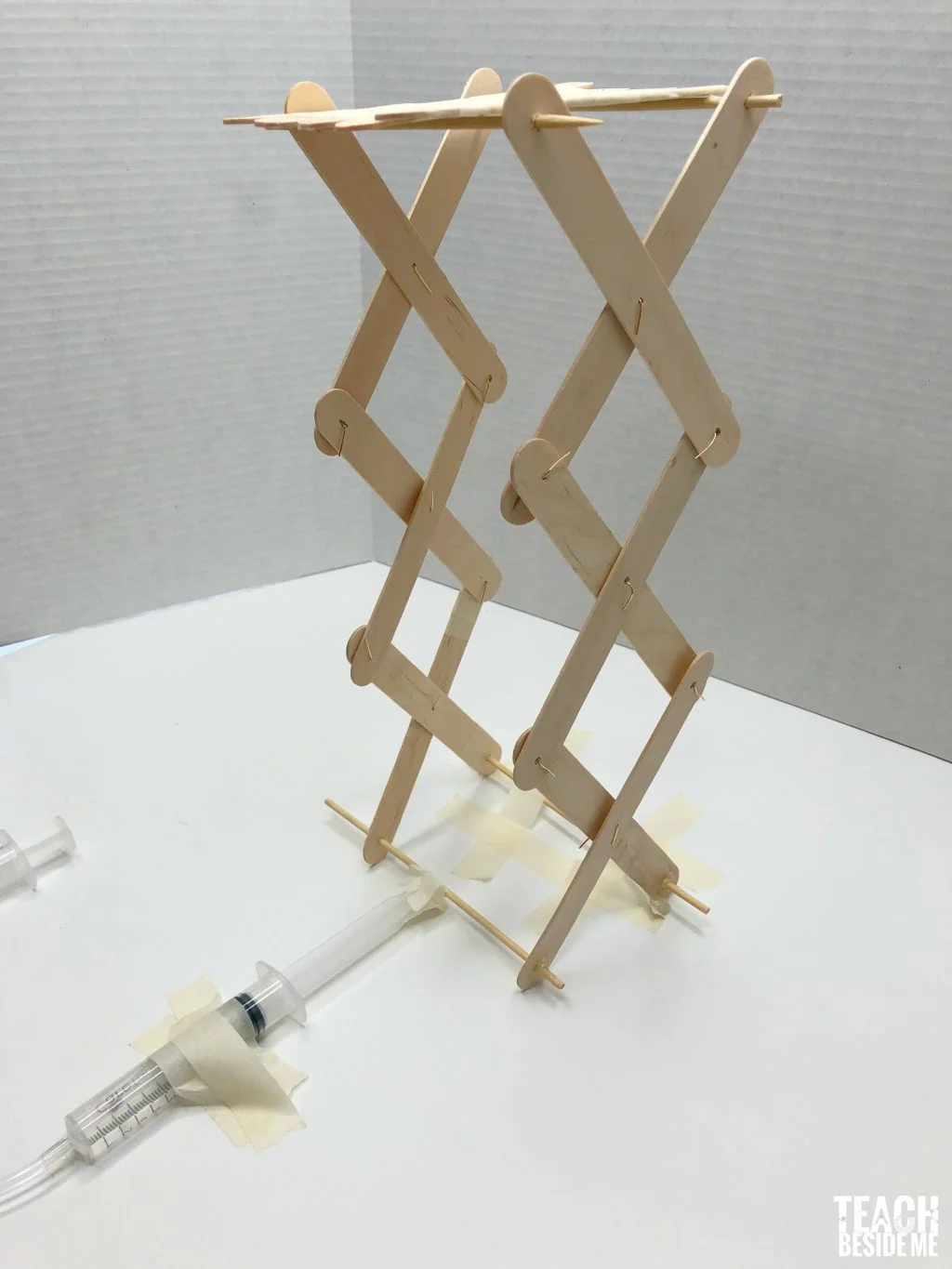
This captivating project invites students to learn about engineering and fluid mechanics. By constructing a working model of a hydraulic elevator, students will explore the principles of Pascal’s law and the fascinating concept of fluid pressure.
Learn more: Teach Beside Me
18. Brew up Some Root Beer
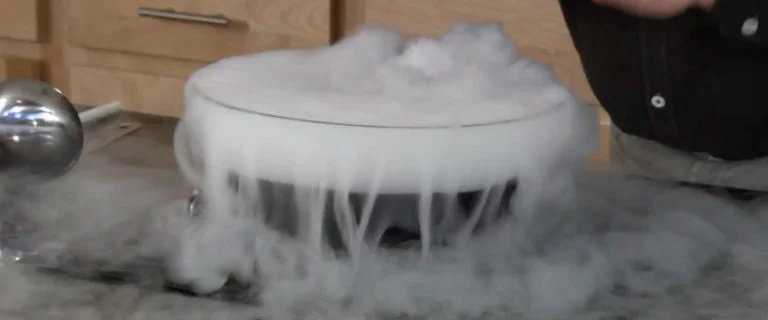
This enticing project invites students to explore the fascinating world of chemistry and fermentation while creating their own delicious and bubbly concoction.
Learn more: Home School Creations
19. Extracting Bismuth From Pepto-Bismol Tablets
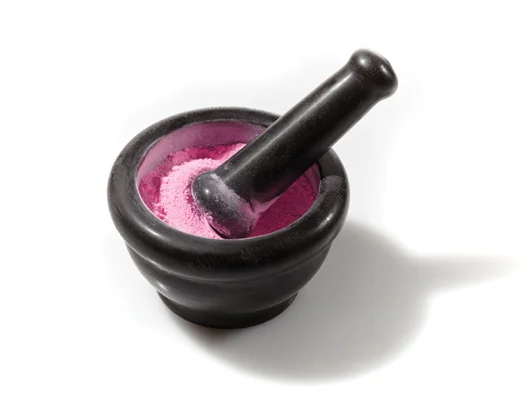
This hands-on experiment not only sheds light on the principles of chemistry and lab techniques but also highlights the real-world applications of bismuth in medicine and various industries.
Learn more: Popscie
20. Solar-Powered Water Desalination
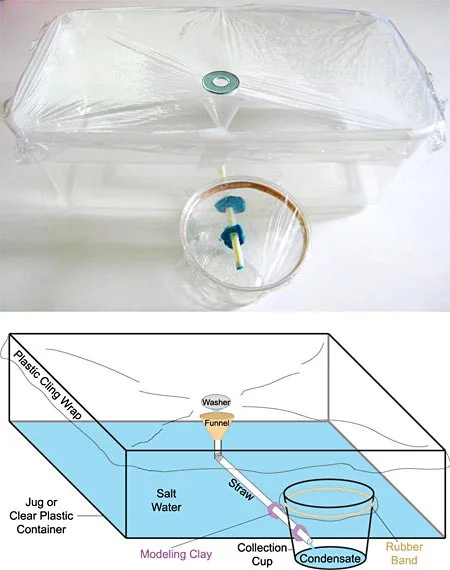
By designing and building a solar-powered water desalination system, students will learn how to harness the sun’s energy to purify saltwater and make it safe for consumption.
21. Applying Hooke’s Law: Make Your Own Spring Scale
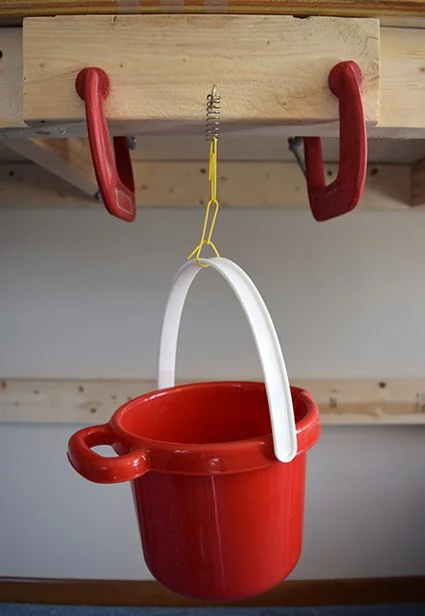
By designing and constructing their very own spring scale, students will uncover the principles of Hooke’s Law and the relationship between force and displacement in a spring system.
22. Homemade Hand Warmer
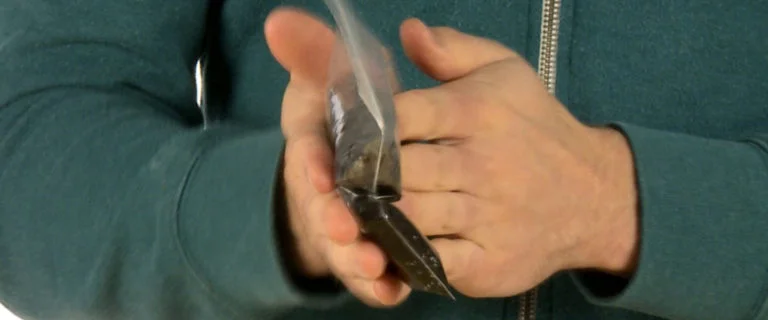
By creating their own hand warmers using safe and easily accessible materials, students will witness the magic of heat generation through chemical processes.
Learn more: Steve Spangler
23. Explore the Concept of Symbiosis Involving Nitrogen-Fixing Bacteria.
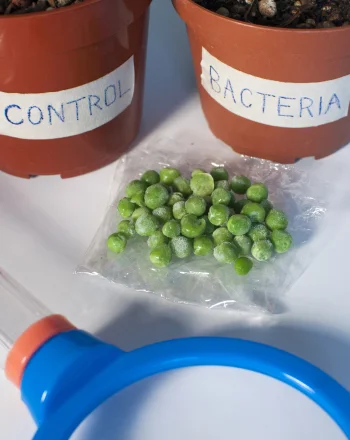
By investigating how certain plants form a mutually beneficial bond with these bacteria, students will gain insights into the essential role of nitrogen fixation in the ecosystem.
Learn more: Education.com
24. Center of Gravity Experiment
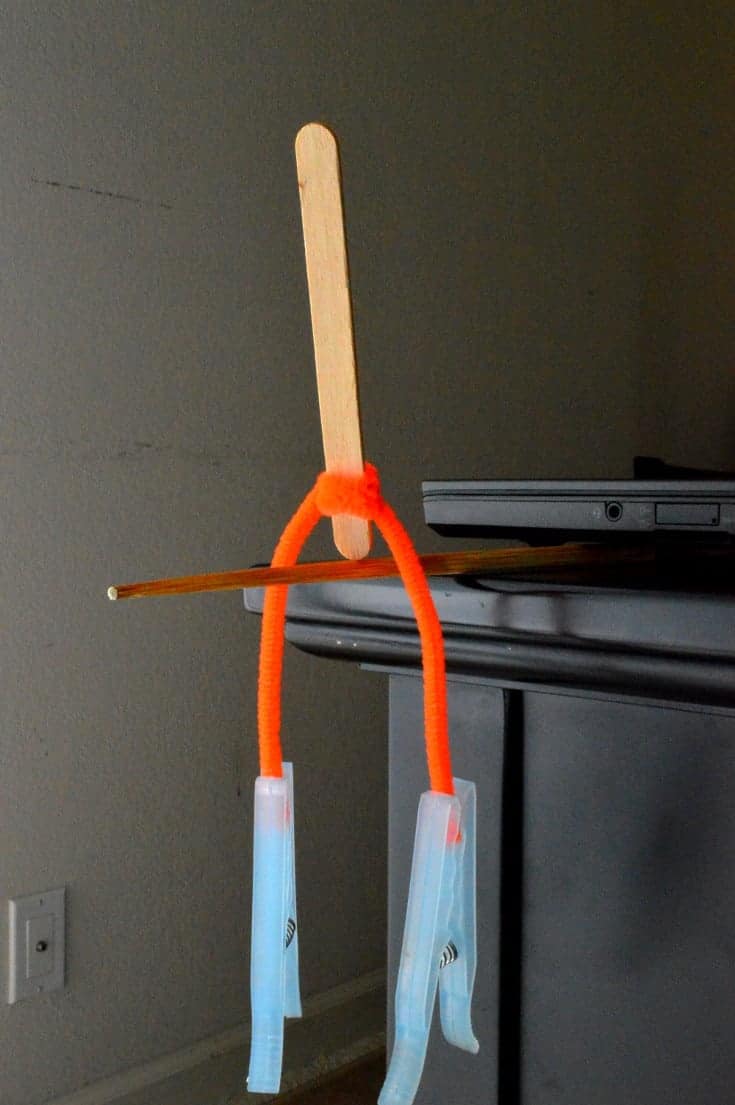
This fascinating project invites students to explore the concept of the center of gravity and its role in determining stability.
25. Power up Homemade Batteries
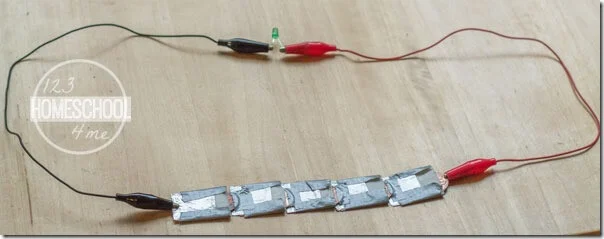
This captivating project invites students to learn about electrochemistry and energy generation.
Learn more: 123 Homeschool
26. Film Canister Explosions
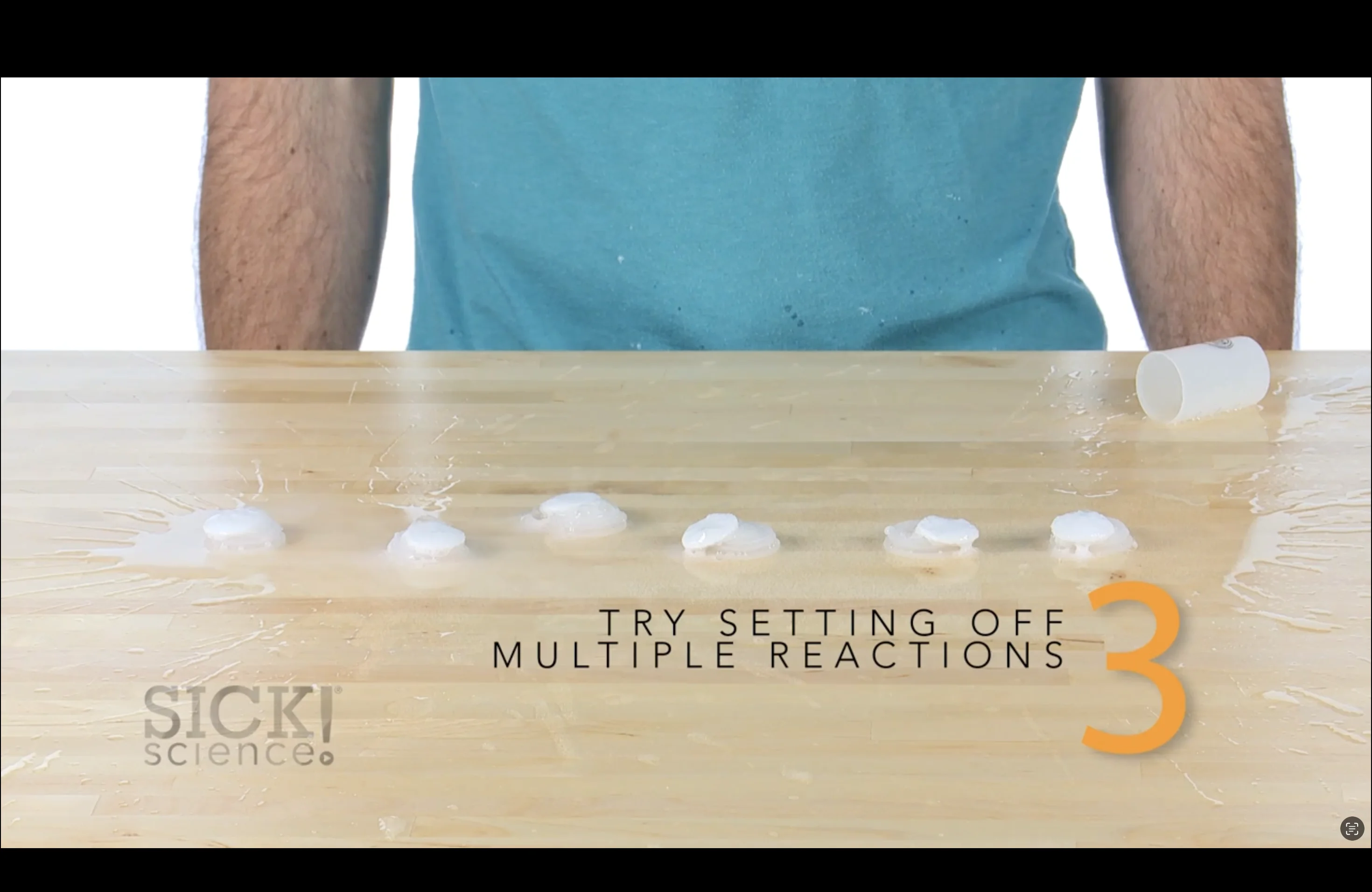
Prepare for a blast of excitement and chemistry with the high school science experiment – “Film Canister Explosions!” This project teaches students about chemical reactions and pressure build-up.
27. Investigating Osmosis with Potato Slices
This hands-on experiment not only provides a practical understanding of osmosis but also highlights its relevance in everyday life, from understanding plant hydration to food preservation techniques.
28. Make Homemade Fly Trap
This captivating “Make Homemade Fly Trap!” project invites students to explore the principles of pest control and observe the behavior of flies.
29. Hydroponics: Gardening Without Soil
This exciting project invites students to explore innovative agricultural practices that harness water and nutrient solutions to grow plants.
By setting up their hydroponic system and nurturing plants through this method, students will witness the fascinating dynamics of root development and nutrient absorption.
30. Clothespin Airplane
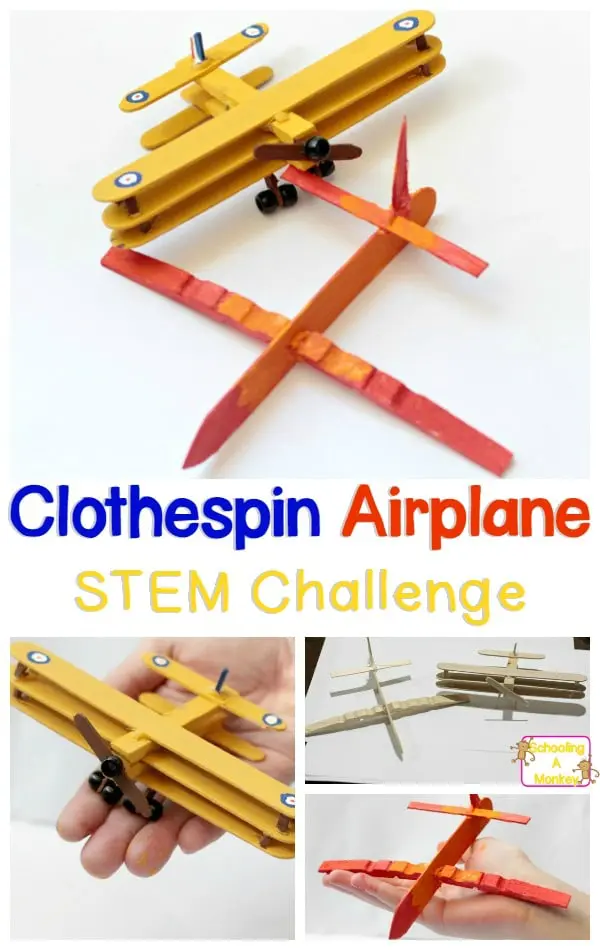
As they test and modify their creations, students will learn about the principles of lift, thrust, and drag, gaining a deeper understanding of how these forces come together to keep airplanes soaring through the skies.
Learn more: Steamsational
Similar Posts:
- 68 Best Chemistry Experiments: Learn About Chemical Reactions
- 37 Water Science Experiments: Fun & Easy
- Guide on College and University Admissions
Leave a Comment Cancel reply
Save my name and email in this browser for the next time I comment.

IMAGES
COMMENTS
Apr 21, 2024 · The extraction of DNA is an excellent experiment for high school students to gain a better understanding of the principles of molecular biology and genetics. This experiment helps students to understand the importance of DNA in research and its applications in various fields, such as medicine, biotechnology, and forensics. Learn more ...
Jun 21, 2022 · Scientific Method and High School Biology Experiments. Much of high school biology is focused on instilling the elements of science in students. The scientific method is one of these main focuses. The method prompts participants in science to be investigators and to come up with a guess about what will happen in a given experiment, called a ...
Jan 4, 2023 · Science is no fun without practical experiments. Unlike middle school, where you limit your study and inquiry of science to the theoretical realm, high school has a different scene. Experiments are a major part of studying science in high school, and biology all the more so. Biology is fascinating. It makes us wonder at the ... <a title="10 Awesome Biology Experiments Ideas For High School ...
Feb 6, 2024 · The cool thing about high school is that kids are old enough to tackle some pretty amazing science experiments and projects. Some science experiments for high school are just advanced versions of simpler projects they did when they were younger, with detailed calculations or fewer instructions. Other projects involve fire, chemicals, or other ...
High school is the perfect time to delve deeper into the world of biology, and I’ve gathered seven fun and educational experiments that will ignite your students’ curiosity and make biology come alive. So, roll up your sleeves, put on your lab coat, and let’s dive into these fun biology experiments! 1. Barf Bag Lab
Apr 17, 2024 · Science fair is not just about the glitz and glamour of a first-place trophy; it’s about the passion, the inquiry, and the insatiable curiosity that drive every scientist, young and old. Hopefully, our curated list of the best hands-on science fair projects for high school students will ignite that curiosity in you.